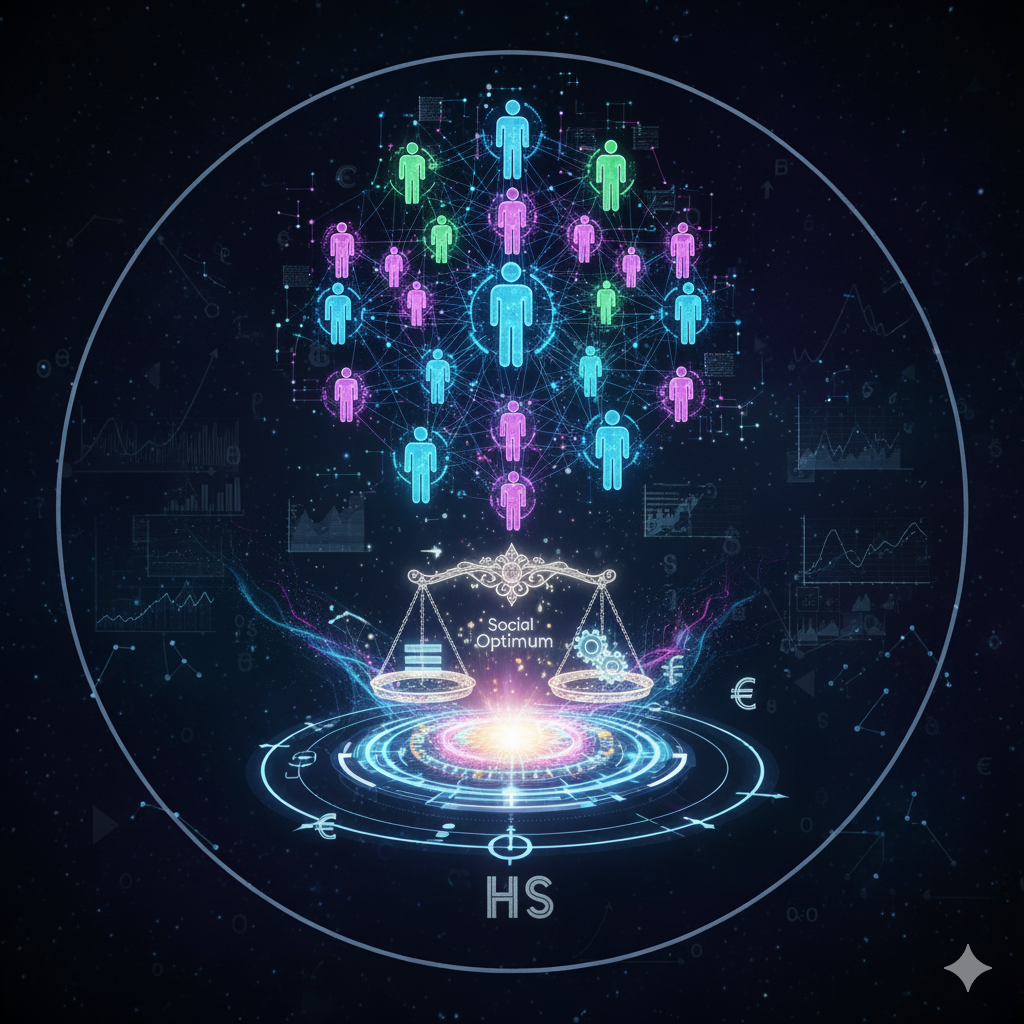Introduction
A central bank is the apex monetary authority in a country, responsible for controlling the supply of money, regulating credit, stabilizing prices, and maintaining economic stability. Examples include the Reserve Bank of India (RBI), the Federal Reserve (USA), the Bank of England, and the European Central Bank (ECB).
Monetary fluctuations, such as inflation, deflation, or currency instability, directly impact economic growth, employment, and investment. There is ongoing debate among economists about whether central banks are responsible for these fluctuations or merely respond to external economic conditions.
This article examines the role of central banking systems in causing or controlling monetary fluctuations, supported by theoretical arguments, historical evidence, and economic reasoning.
1. Functions of a Central Bank
Before analyzing responsibility, it is important to understand the primary functions of a central bank:
1.1 Issuer of Currency
- The central bank has the exclusive authority to issue the nation’s currency.
- It ensures uniformity, trust, and legal recognition of money in the economy.
1.2 Banker to the Government and Commercial Banks
- Maintains government accounts, manages public debt, and lends to commercial banks.
- Acts as the lender of last resort during liquidity crises.
1.3 Monetary Policy Implementation
- Uses tools of monetary policy to control money supply and credit conditions.
- Objectives: price stability, economic growth, employment, and foreign exchange stability.
1.4 Control of Credit
- Regulates commercial bank lending through:
- Cash Reserve Ratio (CRR)
- Statutory Liquidity Ratio (SLR)
- Repo and Reverse Repo rates
1.5 Stabilization of Financial System
- Ensures financial market stability, prevents bank runs, and promotes confidence in the economy.
2. Understanding Monetary Fluctuations
Monetary fluctuations refer to variations in the supply and demand of money, affecting prices, interest rates, and overall economic activity. These can be:
- Inflation: Persistent rise in the general price level.
- Deflation: Continuous decline in prices, often linked to economic contraction.
- Stagflation: Combination of inflation and stagnation.
- Hyperinflation: Extremely rapid increase in prices due to excess money supply.
- Liquidity crises: Sharp contraction of available credit in the economy.
Causes of monetary fluctuations may include:
- Excessive or insufficient money supply
- Credit mismanagement
- External shocks (oil price hike, wars)
- Fiscal deficits and government borrowing
The central bank plays a pivotal role because it controls money supply and credit conditions, which directly influence these fluctuations.
3. Arguments Supporting Central Bank Responsibility
Many economists argue that central banks can cause or amplify monetary fluctuations if their policies are mismanaged.
3.1 Monetary Expansion and Inflation
- When a central bank increases money supply excessively, more money chases the same quantity of goods, leading to inflation.
- Example: In the 1970s, the US Federal Reserve expanded money supply to finance fiscal deficits, contributing to stagflation.
- Mechanism:
Excess Money Supply → Higher Demand → Price Rise → Inflation\text{Excess Money Supply → Higher Demand → Price Rise → Inflation}Excess Money Supply → Higher Demand → Price Rise → Inflation
3.2 Credit Mismanagement and Asset Bubbles
- Easy credit policies can lead to excessive lending, speculative investment, and asset price bubbles.
- Example: The 2008 Global Financial Crisis saw low interest rates by central banks contributing to a housing bubble.
- When the bubble bursts, deflationary pressures and liquidity crises arise.
3.3 Inadequate Response to Inflation
- Central banks may delay tightening monetary policy during inflationary periods.
- This prolongs price rises, reduces purchasing power, and causes uncontrolled monetary fluctuations.
- Example: Hyperinflation episodes in Zimbabwe and Weimar Germany were partly due to poor central banking responses.
3.4 Political Pressure and Fiscal Dominance
- Central banks sometimes operate under political pressure to finance government deficits.
- Printing money to fund budget deficits increases the money supply, leading to inflationary fluctuations.
- Example: Developing countries in the 1980s experienced high inflation due to central banks monetizing fiscal deficits.
4. Counterarguments: Central Bank as a Stabilizer
While central banks can contribute to monetary fluctuations, they are also primarily institutions for stabilization.
4.1 Control of Inflation and Deflation
- By adjusting interest rates and cash reserve requirements, central banks regulate money supply to maintain price stability.
- Example: RBI’s repo rate adjustments influence lending rates, controlling credit expansion and inflation.
4.2 Lender of Last Resort
- During financial crises, central banks inject liquidity to stabilize markets, preventing deflation and bank runs.
- Example: The Federal Reserve during the 2008 crisis provided massive liquidity to prevent collapse.
4.3 Countercyclical Policies
- Central banks implement monetary policy to smooth economic cycles:
- Expansionary policy during recession
- Contractionary policy during boom
- Properly executed, these policies reduce monetary fluctuations rather than cause them.
4.4 Independent Central Banking
- Countries with independent central banks (free from political influence) are less prone to causing monetary instability.
- Example: Bank of England and European Central Bank maintain long-term price stability by following strict mandates.
5. Mechanisms of Central Bank Influence
Central banks influence monetary fluctuations through:
5.1 Quantitative Tools
- Cash Reserve Ratio (CRR): Higher CRR reduces lending capacity, contracting money supply.
- Statutory Liquidity Ratio (SLR): Mandates banks to hold securities; affects credit availability.
- Open Market Operations (OMO): Buying/selling government securities adjusts liquidity.
5.2 Qualitative Tools
- Credit rationing: Directing credit to priority sectors.
- Margin requirements: Controlling borrowing for speculative purposes.
- Moral suasion: Encouraging banks to adopt prudent lending practices.
5.3 Policy Errors Leading to Fluctuations
- Over-reliance on any single tool can distort money supply.
- Excessive liquidity injection without matching growth in production → inflation.
- Tightening credit too aggressively → deflation and economic slowdown.
6. Historical Examples
6.1 Hyperinflation in Germany (1920s)
- Excessive printing of money by the Reichsbank to pay war reparations led to hyperinflation.
- Currency lost value, prices skyrocketed, and economic stability collapsed.
6.2 2008 Global Financial Crisis
- Low interest rates and loose credit by central banks contributed to housing and asset bubbles.
- Collapse led to sharp monetary fluctuations and global recession.
6.3 RBI and Inflation Control in India
- During 2010–2013, RBI raised repo rates to control rising inflation caused by credit expansion.
- Demonstrates central bank’s role in mitigating monetary fluctuations.
7. Arguments Against Central Bank Being Solely Responsible
- External Shocks: Oil price shocks, wars, or global recessions can cause monetary fluctuations beyond central bank control.
- Private Sector Influence: Speculative lending, corporate borrowing, and household behavior also influence money flow.
- Structural Factors: Agricultural output, productivity, and fiscal policies affect price levels independently.
- Time Lags: Monetary policy affects economy with a lag; short-term fluctuations may occur despite central bank efforts.
8. Diagrammatic Representation
8.1 Inflation Due to Excess Money Supply
- X-axis: Quantity of Money
- Y-axis: Price Level
- Money supply curve shifts right → price level rises → inflation
8.2 Liquidity Contraction and Deflation
- Money supply curve shifts left → reduced lending → decreased aggregate demand → deflation
8.3 Central Bank Intervention
- Expansionary or contractionary monetary policy shifts the money supply curve to stabilize prices.
9. Summary
- Central banks influence monetary fluctuations through money supply, credit regulation, interest rates, and liquidity management.
- Mismanagement or delayed action can amplify fluctuations (inflation, deflation, asset bubbles).
- Properly executed monetary policy stabilizes the economy and mitigates extreme fluctuations.
- Other factors—political influence, fiscal deficits, external shocks—also contribute.
- Central banks are partly responsible, but not solely accountable for all monetary instability.
10. Conclusion
Central banking systems have a dual role in monetary fluctuations:
- Cause of fluctuations: Through policy errors, excessive credit expansion, or fiscal dominance.
- Stabilizer of fluctuations: By adjusting money supply, controlling inflation, and acting as lender of last resort.
Key Insights:
- Monetary fluctuations are influenced by central bank policy, government fiscal behavior, private sector activity, and external shocks.
- Independent, well-regulated central banks with countercyclical policies minimize fluctuations.
- Historical evidence shows that both mismanagement and prudent policy have significant impacts on monetary stability.
Thus, while central banks can be responsible for monetary fluctuations, their primary role is to ensure stability, smooth economic cycles, and maintain confidence in the financial system. Properly designed and executed policies reduce the frequency and severity of monetary fluctuations.




